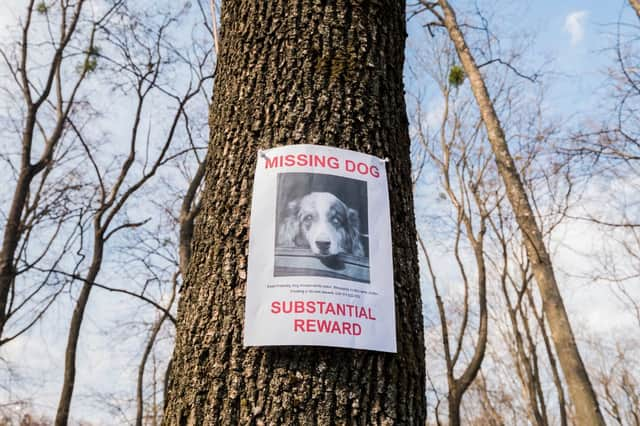Missing Pets: Here's what you need to do if you lose your adorable dog or curious cat - or find one


As a pet owner, one of the worst things you can experience is your pet going missing - and it can be especially concerning during the winter months when it's freezing cold and there’s less daylight.
To help out Catrin George, animal wellbeing expert at Animal Friends Pet Insurance, has shared some steps to take to give yourself the best chance of reunification if your cat or dog unfortunately goes missing - as well as what to do if you come across a lost pet.
Advertisement
Hide AdAdvertisement
Hide AdWhat to do if you lose your pet
Report your pet missing
The most important step you should take as soon as you believe your pet is lost is to report them as missing to your microchip database to ensure that if your pet is found and their microchip is scanned by a vet or local authority, you’re able to be reunited quicker.
Utilise social media
Social media is a fantastic tool allowing you to reach the masses at the touch of a button, there are many Facebook, Instagram and other social media pages dedicated to reuniting lost and stolen pets with their owners, as well as local resident groups that are full of people that might be able to help.
It’s important to ensure you’re being safe whilst posting about your lost pet on social media, for example, never include your address on any public posts. Post clear images of your pet, any significant markings that could help identify them, plus the best way to contact you if they’re found.
If your pet has insurance, it's always worth checking if your policy offers a lost or stolen advertising or reward benefit to help you increase your chances of being reunited with your dog or cat.
Call local vets
If your dog or cat is found, the individual who found them should take them to the nearest vet who will scan their microchip. It’s worth ringing around any vet offices in your local area to flag that your dog has gone missing, and check whether any dogs of a similar description have been brought in since you last saw your pup. You can also call local rescue centres too as some also help with lost pets.
Revisit the area where you last saw them
While it may be a long shot, posting flyers in the surrounding areas will help raise awareness and alert fellow animal lovers to keep a look out and get in touch if they see a similar-looking dog or cat.
What to do if you find a lost dog or cat
If you see a pet looking lost, with no owner around, there are some steps to take to ensure you can help reunite them with their loved ones.
It’s heartbreaking to see an animal in distress, but if you find a lost dog or cat, you can make a real difference by helping them back to their owners.
Advertisement
Hide AdAdvertisement
Hide AdA lost pet can be frustrated, scared and stressed, and as you don’t know them, be very careful as to how you approach them as you don’t know how they might react. If you’re able to slowly approach a lost pet and they’re happy to cooperate, try and get them on a lead or into a cat carrier to ensure they don’t run away, and take them to the nearest vets.
The vets will be able to help with scanning for a microchip, which will hopefully lead to contacting the owner, and reuniting the pooch with their family.
The importance of microchips
The main thing we would like pet owners to take from our advice is to ensure that your pet is microchipped and that your contact details are up to date on the microchipping database. It is a legal requirement for dogs over the age of eight weeks to be microchipped, and the law to microchip cats is coming into effect in June 2024.
A recent survey from Dogs Trust revealed that in 2022, more than 4,000 dogs were unable to reunite with their owners due to their microchip contact details being incorrect, so pet-parents must prioritise keeping these updated to be in with the best chance of finding their pets should they go missing.
Comments
Want to join the conversation? Please or to comment on this article.